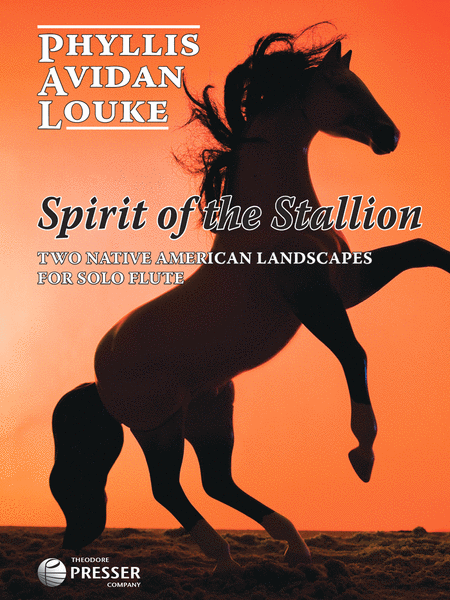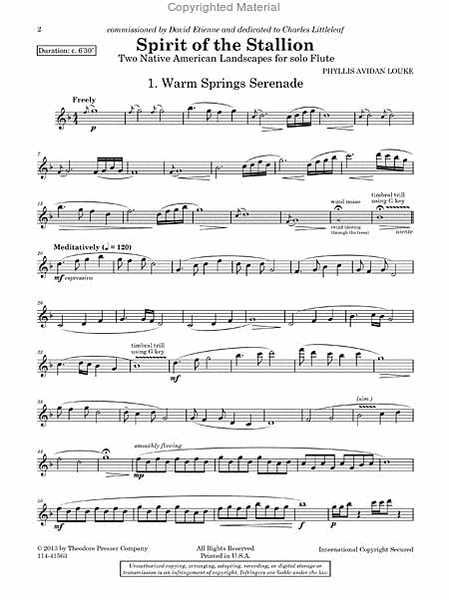Spirit of the Stallion
Two Native American Landscapes for Solo Flute
-
Ships in 1 to 2 weeks
Details
Description
SKU: PR.114415630
Two Native American Landscapes for Solo Flute. Composed by Phyllis Avidan Louke. Sws. Contemporary. Solo part. With Standard notation. Composed 12-Mar. 8 pages. Duration 7 minutes. Theodore Presser Company #114-41563. Published by Theodore Presser Company (PR.114415630).ISBN 9781598064520. UPC: 680160611362. 9x12 inches.
SPIRIT OF THE STALLIONTwo Native American Landscapes for solo Flute (114-41563)Inspired by Native American scenery and music, Spirit of the Stallion is a two-movement homage to the sunny high desert and mountain terrain of central Oregon and to the enduring spirit of stallions. The work is within the reach of intermediate players and may serve as an introduction to special sonorities such as blowing winds and timbral trills. For intermediate to advanced performers.
From the back cover:NOTES BY THE COMPOSERSpirit of the Stallion is a programmatic work in two movements for solo flute, commissioned by David Etienne and dedicated to Charles Littleleaf, Native American flutist and traditional flute maker. Charles Littleleaf’s love for horses as well as the beautiful scenery of his home in Warm Springs served as the inspiration for this piece. Spirit of the Stallion is written using the minor pentatonic scale to honor Charles Littleleaf’s Native American heritage.The first movement, Warm Springs Serenade, begins with a short cadenza to be played freely. The movement is meditative and flowing, expressing the beauty of the Warm Springs Reservation in sunny Central Oregon, home of Charles Littleleaf. Bordered by the Deschutes (deh-shoots) River, this high desert area has a backdropof snow-covered mountains. In measure 18, and again at the end of the first movement, there is a measure of “wind noise” that should sound like wind blowing through the trees. Experiment with different sounds blowing into the embouchure hole, both covered and partially covered, until you are satisfied with the sounds produced. These can include blowing with force, and gentler whistle tones.The second movement, Gallop at Sunrise, features an exciting ride over the high desert, with stops along the way to admire the view. Double-tonguing, quintuplets, sextuplets, and grace notes contribute to the excitement. The short cadenza near the end of the movement should be played expressively without strict tempo.


 Share
Share